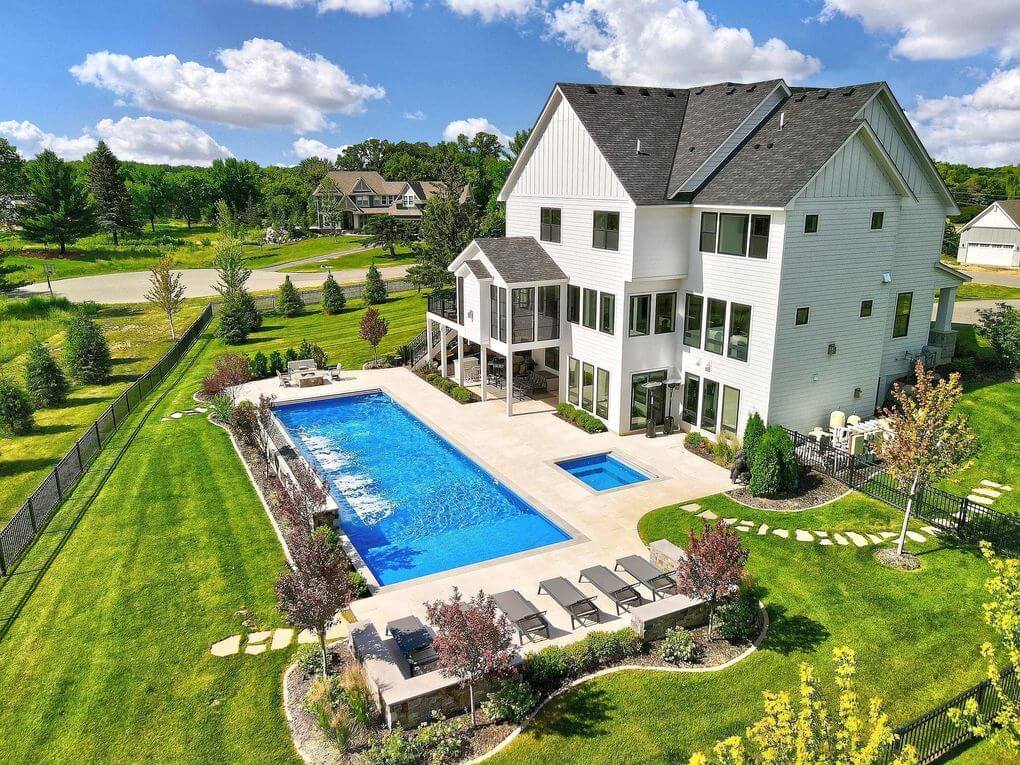
If you’ve invested in having your dream pool installed, it makes sense to want to preserve it for as long as possible.
Extending the lifespan of your inground swimming pool — especially in Minnesota — isn’t as hard as you might think. We’ll walk you through what you need to know (and the things you can do) to best protect your home oasis long term below.
What is the average life of an inground pool?
The average life of an inground pool depends on the materials the pool and its liner are made out of. A well-made concrete pool can last up to or over 70 years, but will require concrete resurfacing about once a decade to preserve its finish. If you use a vinyl liner inside your pool, you can expect to replace it every 8 to 12 years. Fiberglass pools won’t last as long as concrete ones, but they require less regular maintenance and can be used regularly for up to 30 years.
How do cold climates impact inground swimming pools?
Effective inground pool care involves two things: the necessary knowledge and the right materials. When it comes to inground pools in Minnesota, some of the most necessary knowledge involves our harsh seasonal weather.
- Concrete pools are made from rebar, sprayed concrete and a surfacing material – typically plaster or tile. The fluctuations in temperature that happen seasonally in Minnesota can speed up your pool’s need for repairs as it faces cycles of freezing and thawing. Because of how hardy these building materials are, however, they stand up to these cycles fairly well.
- Fiberglass pools are made in a way that promotes flexible movement without cracking. The greatest risk you face with a fiberglass pool and harsh weather will be how it interacts with the space around it. If your yard takes on a lot of moisture that causes soil and gravel to shift during the changing seasons, there’s a risk of cracking. These risks are easily avoided by making sure you partner with a pool installer that understands the importance of setting up the right supportive infrastructure.
- Pools that use vinyl liners run the biggest risk of temperature-based damage. This is due to the fact that fluctuating temperatures can cause the material to turn brittle. Options to help prevent this from happening include the use of built-in heaters and the use of winterizing chemicals.
How can I extend the lifespan of my inground Minnesota swimming pool?
It’s easy to extend the lifespan of your inground Minnesota swimming pool: all you have to do is keep it regularly and properly maintained. Here’s how:
- Take good care of your water. Water maintenance for your pool has two main focuses: the chemicals and the cleanliness. You want to test your water supply regularly to verify that you have the right water to chlorine ratio, determined by pool size, materials and environment. Cleanliness involves paying attention to water color — if it gets cloudy, take a look at the salt cells and clean them out. If it takes on a strange greenish tint, it might be time for professional algae removal.
- Listen to the mechanics. The most important mechanical part of a pool is its pump, which typically wears out faster than the pool itself. As pumps age, they start making a lot more noise. If this is happening to you, we recommend taking a look at your pump’s motor to see if the o-ring has worn away. This is the most common reason for noisy pumps and can easily be fixed with the help of a service technician and a new rubber o-ring.
- Cleaning your filters. Dirty filters make pumps work harder, which in turn leads them to wear out faster. It’s best to remove and clean your filters every two to three weeks to keep them from impeding the optimal performance of your pool system.
Did you know that we offer maintenance plans at Prestige Pools that take the guesswork out of extending the lifespan of your Minnesota swimming pool? Contact our team today to learn more!